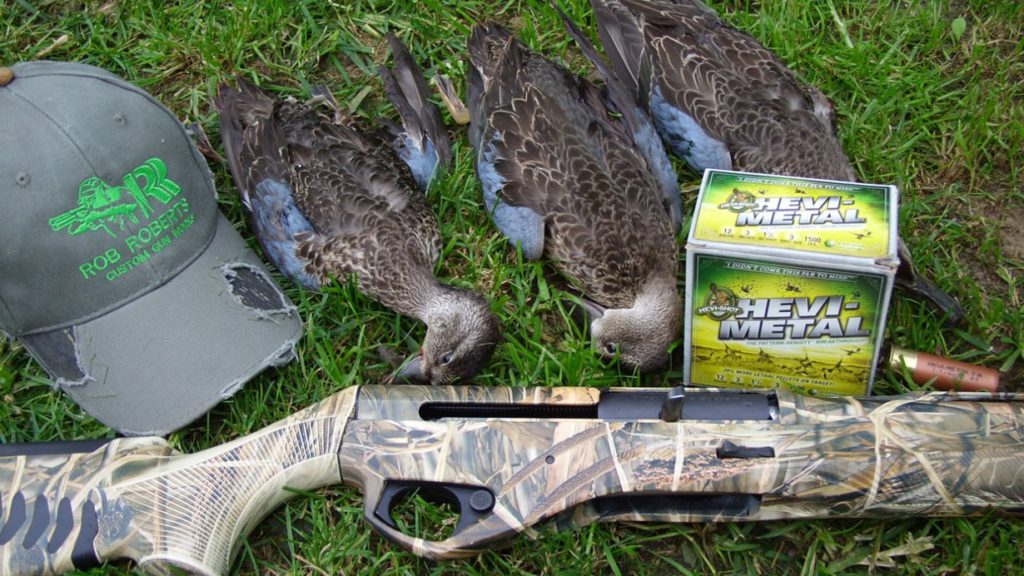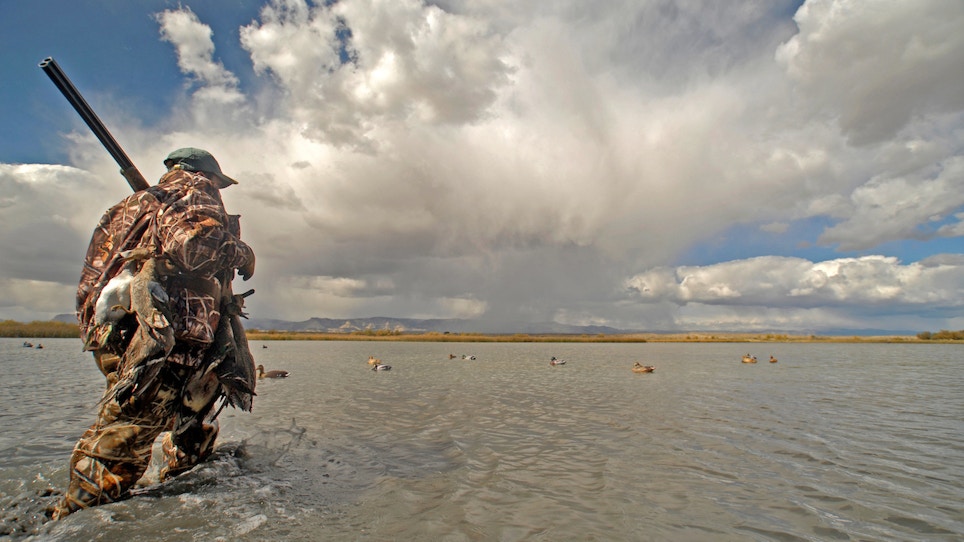The turkey and tactical crowds are notorious for tricking out their scatterguns with all sorts of fancy gadgets. However, waterfowlers should also consider customizing their shotguns. The following are some practical shotgun modifications that will not only enhance your favorite shotgun’s performance, but also make it more user-friendly.
Shotgun modifications: performance upgrades
One of the simplest shotgun modifications you make is having its forcing cone lengthened. The forcing cone is the area of the bore just ahead of the chamber. In most barrels, there is a rather abrupt drop-off in this transition zone between the larger chamber and the smaller main bore.
Lengthening the forcing cone so it has a longer, more gradual taper provides the shot charge a gentler, less abrupt transition into the main bore, resulting in less pellet deformation, fewer erratic flyers, and hopefully more even patterns downrange.
Related: Shotgun Choke Tubes Waterfowlers Should Know
After making a less-than-ideal shot on a snow goose in which only one pellet struck the bird (albeit in the heart), I felt my Benelli Super Vinci’s barrel was in need of some tweaking. I didn’t want to do anything radical, though, like overboring. Having recently tested Benelli’s SBE II Performance Shop Waterfowl Edition, which has many upgrades done by noted gunsmith Rob Roberts including a lengthened and polished forcing cone, I reasoned that might be a good place to start. So, off my Super Vinci went to Rob Roberts to have its forcing cone relieved.
On opening day, the rejuvenated semi-auto dropped two teal on the wing with a single shot. A year later, it topped that performance by felling three teal in flight with one shot. I couldn’t be happier with the results and believe the longer forcing cone made an already good gun great.
Of course, you’ll want to have a qualified gunsmith perform the task, but the procedure is relatively affordable, often under $100 per barrel. Forcing cone lengthening might offer the most bang for the buck in terms of improved performance. Many shotguns, such as Browning’s newer models, now come from the factory with lengthened forcing cones, as increasingly more manufacturers recognize the rewards this relatively minor modification offers.
Barrel porting is another popular modification. While less recoil is claimed, reduced muzzle rise is probably the real benefit of barrel porting, allowing you to get back on target quicker for faster follow-up shots. Again, be sure to have qualified experts do the work, such as Pro-Port or Ballistic Specialties. Mossberg has become a leader in factory barrel porting. Many of its new waterfowl models have ported barrels.
Outfitting your smoothbore with an aftermarket choke tube can also drastically improve its performance. Almost all aftermarket chokes are extended, as opposed to factory chokes, which fit flush with the muzzle. Extended chokes have a longer parallel section in which to more gradually constrict the shot, resulting in more uniform patterns.
Related: Does your shotgun really fit?
Several companies, such as Carlson’s and Trulock, offer affordable, extended waterfowl chokes in various constrictions. If you send Custom Gun Works your barrel, they’ll measure its exact inside bore diameter and custom-make a long-range Drakekiller choke tube designed specifically for your gun.
Some chokes, such as those from Kick’s or Hevi-Shot, have ports on their extended portions that not only help separate the wad from the shot column, but also aid somewhat in reducing felt recoil and controlling muzzle rise. If you want to reap some of the rewards of barrel porting without having holes drilled into your barrel, ported chokes are a less invasive option.

Shotgun modifications: convenience upgrades
Some shotgun modifications simply make life easier. The most convenient add-on is a sling. Many new waterfowl shotguns, especially those with synthetic stocks, come with factory-equipped sling attachments molded into the stock and integrated into the magazine cap. If not, it’s usually not hard to find a replacement magazine cap with a swivel stud for the more popular shotgun models. Installing a sling stud into a wooden stock isn’t too difficult — simply screw it in — but synthetic stocks might require some drilling, so it might be best to let a professional gunsmith perform the task.
Of all the slings I’ve tried, my favorite is Browning’s X-Cellerator. The shotgun model, available in black or Mossy Oak Duck Blind camo, is adjustable and long enough to be slung over both your shoulder and neck while wearing a heavy coat. Beware of shorter slings designed for rifles, as they’ll usually just fit over a shoulder and can slip off when you bend down to set decoys or receive a duck from your retriever.
Related: The duck stamp dog
A soft recoil pad that protects the shoulder is a creature comfort no shotgun should be without, especially when magnum waterfowl loads are on the menu. To replace an old, hardened pad with a newer, softer pad, simply remove the two recoil pad screws (a #2 Phillips-head screwdriver usually works), take off the old pad and install the new one.
Pre-fit recoil pads are available for many popular shotgun models. The softest aftermarket pads I’ve tried are available from Limbsaver and KICK-EEZ. The softest factory pad I’ve felt is Remington’s SuperCell. If you are one of the many waterfowlers who own a synthetic-stocked 870, try a SuperCell pad and see what I mean. It will make a world of difference to your shoulder and enhance your overall shooting experience.
To protect the face, wrap a Wrapid Comb around the stock. Crafted from a soft, cushiony material that protects the cheek, the Wrapid Comb also comes with spacers for adjusting comb height.
A final do-it-yourself upgrade is a fiber-optic front sight install. HiViz, Uni-dot and Truglo all make bright sights in various colors and configurations that are easy to see in low-light conditions, and they’re easy to install with adhesives, magnets or minimal tools.
Featured photo: John Hafner Photography






